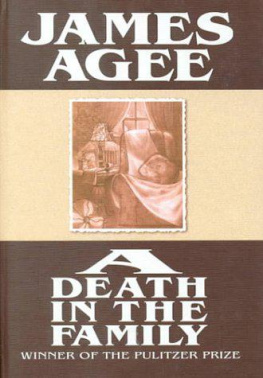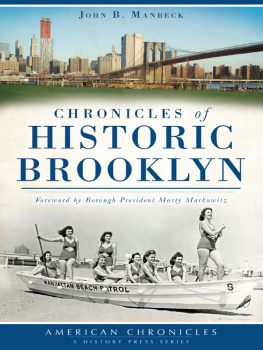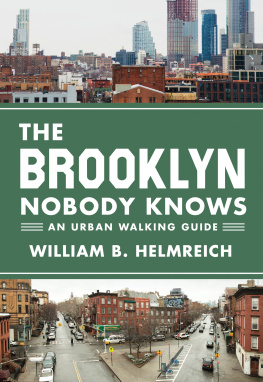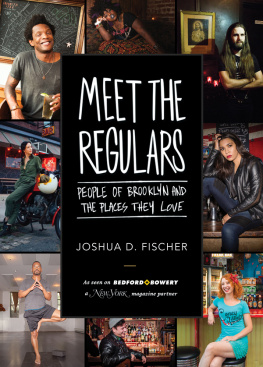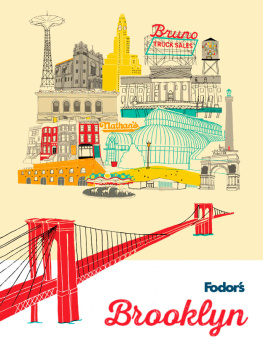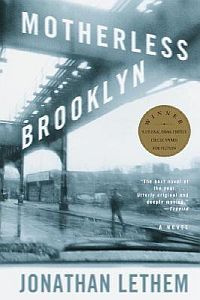Brooklyn Is
JAMES AGEE
Preface by Jonathan Lethem

Brooklyn Is
Southeast of the Island: Travel Notes


Southeast of the Island: Travel Notes
Copyright 1968 The James Agee Trust
Agees Brooklyn
Copyright 2005 Jonathan Lethem
All rights reserved. No part of this publication may be reproduced, stored in a retrieval system, or transmitted in any form or by any meanselectronic, mechanical, photocopy, recording, or any otherexcept for brief quotations in printed reviews, without the prior permission of the publisher.
Library of Congress Cataloging-in-Publication Data
is available from the Library of Congress
Printed in the United States of America
07 06 05 5 4 3 2 1
First edition
Designed by Linda Secondari
CONTENTS
by Jonathan Lethem
by James Agee
AGEES BROOKLYN
by Jonathan Lethem
I WANT to try and sing back at James Agees astonishing song of Brooklyn, this astonishing secret text which like the heart of the borough itself throbs in raw shambolic splendor, never completely discovered, impossible to mistake. Agee is such a loving, explosive, and mournful singer; his prose aims the methods of Walt Whitman like a loving bullet toward the next century, brings that greatest singer of American identity smash up against the midcenturys grubby, boundless polyglot accumulation of successive immigrant hordes, and predicts the outerborough songs to come, the ones that could only have been written by immigrant sons and daughters themselvesMalamud, Fuchs, Paley, Gornick, Marshallthough Agee, much like Whitman, can seem to encompass and predict any author who ever tried to touch Brooklyn since: Henry Miller, Paula Fox, myself. Agees breath and voice come cresting at us out of the past yet keenly modern, and engaged in every syllable with the tides of the past that rush under the craft of his wordsAgee can seem to be surfing the past, always in danger of being swallowed by the high punishing curl of time, always somehow riding atop it instead. Yet if hes a singer hes also a painter, brushstroking with his language the sun-bleached brownstone facades of Slope and Heights and Hill, the shingles and stucco of Flatbush and Greenpoint, the graffiti and commercial signage left like clues for future archeologiststhe brush of his prose is as fond and melancholy as Mark Rothkos in his subway paintings or Philip Gustons in his street scenes, before both painters sank their feeling for the city in abstraction. He writes as though drunk on matters of space and geometry and distance, always seeing the life of the city whole and in microscopic miniature at once, and persistently smashing together architecture and emotion, conveying in the grain of a scornful cornice or a blasted mansion or a half-made park with the odd pubescent nudity of all new public efforts or drawn breathing shades or an asphaltic shingle (his neologism suggesting asthmatic, exalted, sephardic, and who knows what else) his sense that the archipelago of islands settled by the mad invaders of this continent and the refugees who followed, and the nature of the buildings and the streets and the signs the arrivistes constructed everywhere upon these New York islands, are in every way implicated in the experience of any given life lived even temporarily within their bounds, including his own. The shape of the land, in other wordsand of the houses and trees and roadways, and the subways now running underneath themhas, in Agees view, subdued and civilized and corrupted those who had arrived to subdue and civilize and corrupt this place; they made it strange and were made strange by it in turn. Agee tackles head-on Brooklyns doubleness, the paradox of the boroughs weird preening inferiority complex at its proximity to Manhattan and its simultaneous bovine oblivious hugeness, its indifference to attempts at definitionincluding Agees own. He nevertheless made himself so open, such a portal for collective presence, that he truly can seem to have managed to allude to every icon of the place, every glorious shred of ruined culture a Brooklynite might ever flatter himself thinking only hed cherished, and to have mentioned every talismanic name, Ex-Lax, Adelphi, Dekalb, finding vital concrete poetry in the enigma of the names, stitching time together, speaking to every Brooklyn dweller, past or future. In my own instance, Agee paints at one point a devastating cameo of Brooklyn Heights gentility and insularity (subtitled: the dusk of the Gods); reporting his snobbish hosts fear, that Negroes and Syrians are within two blocks of us; those same Syrians now own great swaths of the neighborhood in question, which truly belongs more to them than to any other constituency (and where is the great novel of Arab-American immigrant life on Atlantic Avenue?); they are, in fact, the landlords of the apartment on Bergen Street in which I sit writing this todayso it may seem that Agee is at my shoulder. The essays prose is, at last, more than tidal, its cyclonic, as the narrative rises up on the swirling imaged-junked cone of Agees prophetic style to see the borough and its people whole, diving through parlor windows or into movie theater seats or along a quiet Sunday street to sweep up another handful of lives in a few sprung, compacted sentences, and sweep on. To end at the zoo, a perfect symbol of Agees ultimate insinuation: that all this mad paving and dressing up and scribbling on walls (or on pages) and pouring tea from china cups is still finally nothing more than a vision of the natural world that all our cultural outcroppings, chaotic and placid alike, are just evidence of our peculiar animal activities, and that Brooklyn is only a particularly dense and dreamy version of the zoo that is all human life, an enclosure where any number of not terribly imaginative or visionary individuals can collectively realize a great visionary mass result, a kind of vast art installation made by instinctive, consolation-seeking animals, merely by living their beautiful, ordinary, mad lives in adjacency to one another.
Brooklyn, New York
June 2005
Brooklyn Is
Southeast of the Island: Travel Notes
City of homes and churches.
Whitman, writing of Brooklyn.
One of the great waste places of the world.
Doughty, writing of Arabia.
And blights with plagues the marriage hearse.
Blake, writing of London.
Life is fundamentally composed of vegetable matter.
Obsolete textbook of biology.
WATCHING THEM in the trolleys, or along the inexhaustible reduplications of the streets of their small tradings and their sleep, one comes to notice, even in the most urgently poor, a curious quality in the eyes and at the corners of the mouths, relative to what is seen on Manhattan Island: a kind of drugged softness or narcotic relaxation. The same look may be seen in monasteries and in the lawns of sanitariums, and there must have been some similar look among soldiers convalescent of shell shock in institutionalized British gardens where, in a late summer dusk, a young man could mistake heat lightnings and the crumpling of hidden thunder for what he has left in France, and must return to. If there were not Manhattan, there could not be this Brooklyn look; for truly to appreciate what one escapes, it must be not only distant but near at hand. Only: all escapes are relative, and bestow their own peculiar forms of bondage.
Next page

